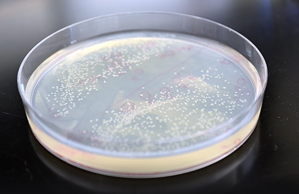October 13, 2013 – The article appeared in Nature, the weekly science journal, on September 30, 2013, and is entitled Synthetic non-oxidative glycolysis enables complete carbon conservation. Cutting through the scientific jargon what UCLA researchers have discovered is a way to breakdown the cellulose in plants to increase biofuel output by as much as 50% over more traditional approaches. Plants use a process called glycolysis to break down glucose in the absence of oxygen. The fermentation process creates the ethanol of biofuels. Biorefineries use biomass from corn and sugarcane and through glycolysis create ethanol and bio-diesel. But the process is inefficient and polluting.
A team at UCLA led by James Liao, a professor of chemical engineering, and Igor Bogorad, a graduate student in the biomolecular engineering department, went about to see if they could increase the efficiency of glycolysis. They genetically engineered an E. coli bacteria to maximize the sugar conversion process beating what occurs in nature by 50%.
Bogorad states, “We rerouted the most central metabolic pathway and found a way to increase the production of acetyl-CoA.” If you don’t know acetyl-CoA it is also known as activated acetate. It’s a molecule that is a key to metabolism in living things and is composed of two carbon atoms. In humans acetyl-CoA is oxidized in our mitochondria, the little engine within the our cells. Our bodies then convert the acetyl-CoA to adenosine triphosphate (ATP) which pretty much powers up every part of us. So this is pretty essential stuff.
Natural glycolysis involves 6 carbon atoms of glucose and loses 2 of those during the conversion. But what Liao, Bogorad and their team discovered was a way to not lose those 2, demonstrating complete carbon conversion. And that means much higher yields of biofuel. States Bogorad, “We envision….wide reaching applications and…many new possibilities because of the way we conserve carbon.”
The discovery can work with many different sugars to produce 100% conversion to acetyl-CoA, and that means much greater yields of cellulosic ethanol. It also means biorefineries no longer have to use large amounts of natural gas to extract the hydrogen used in current biofuel production. Nor will they be a source of CO2 emissions, a byproduct of current production processes.
The discovery also means a wider range of biomass can be used to create ethanol. So rather than corn and sugarcane, biofuel producers can source non-food crops such as switchgrass, corn stover, and forestry waste materials for biorefineries. This means less food land tied up for biofuel production.
In 2007 the world produced 54 billion liters of biofuel. Biofuel production was credited with driving up grain and soybean prices globally. So improved efficiencies cannot come too soon. What’s left to do? The UCLA team needs to scale up its discovery from a petri dish to full production and minimize the conflict within agriculture on whether to grow crops for food or fuel.









